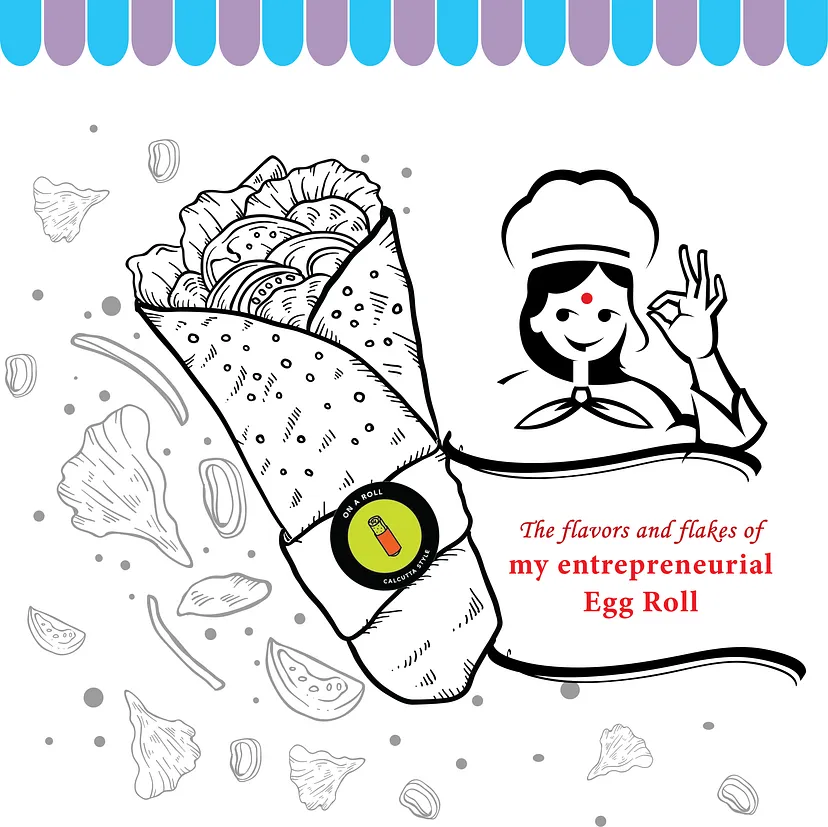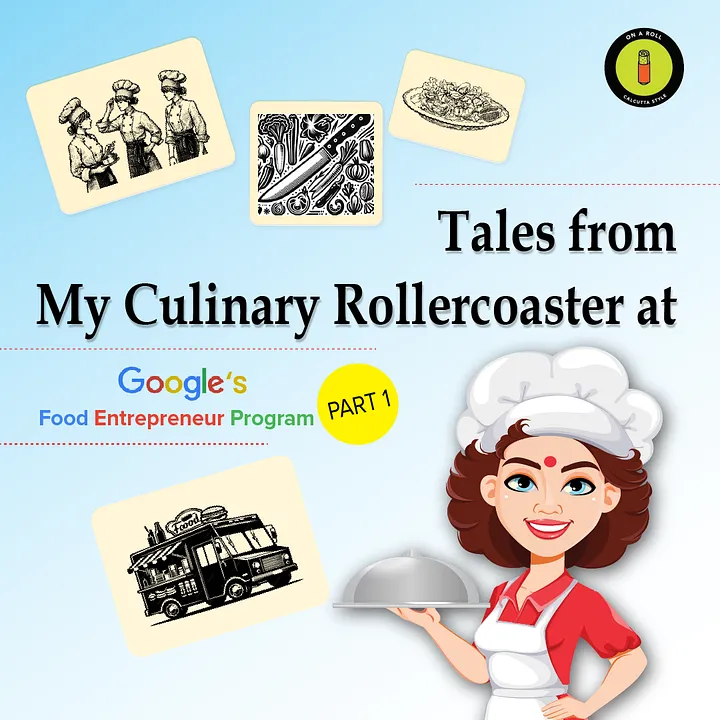The research phase of OnARoll was a delicious journey. My family and I spent a considerable amount of time exploring multiple restaurants across the country, understanding their variation of the classic roll.
Back then, rolls weren’t a regular on the menu in Indian restaurants in the US. The usual Kathi Roll in those places had a base of Naan, Frozen Kawa Parantha, or the local favorite, Tortilla. The sauces, presentation, and taste were far from the zesty fusion I had imagined.
At Mediterranean restaurants, I would experience the taste of chicken shawarma, tzatziki and baba ghanoush, wrapped together in a lavash or pita bread. At Mexican joints, they were called Burritos, which is a mix of rice, beans, steaks, and vegetables. These variations were very much part of the established American food culture, but I couldn’t find the traditional Indian egg roll anywhere. It struggled to join the mainstream even after the launch of my business because most people couldn’t differentiate it from a wrap or a burrito just by its name. When somebody asked me what it was that I had cooked, I simply said, “It’s called a Kathi Roll, kind of like a Burrito but without the rice and beans”. And they would understand.
I believe Kathi Roll underwent a lot of transformations since its origins. What’s interesting is that Kathi Roll was born out of transformation itself. In the mid 90s, Nizam’s in Hogg Market area in Kolkata, started grilling meat on bamboo skewers or “kathi,” and wrapped the meat in parathas for customers who wanted to have a quick meal.
In Mumbai, the rolls evolved to become Frankie. A mix of grilled meat, mint chutney, onions, green chillies, and chaat masala, Frankie became the hit of the street food scene in the late 20th century.
During the research stage, we tried all variations of the Kathi roll, and it took over our entire household by storm. Even while going for work trips to New York or other places in the US, Lovlesh would eat Kathi Rolls and describe in detail how it tasted and how he felt. Often, he would send me a photo of eating a roll with the sauces dripping — a sight I will always remember as his dedication to helping me set up the business.
When I look back, I realize that Lovlesh’s and my journey of entering the culinary world began even before the idea of selling rolls took shape. We were young, newly married, and constantly frustrated by the lack of good Indian food options on our road trips across the East Coast. Back then, in 2005, finding vegetarian choices on highways meant settling for fries and burgers. The internet was still in its early stages, and locating restaurants with vegetarian options was a tedious task. We dreamt of a day when Indian travelers like us could enjoy delicious, convenient Indian food, and a seed of an idea was sown — “Sindhu te Lovy da Dhaba,” a haven for tired travelers yearning for a taste of home.
Lovlesh always enjoyed an egg roll on our trips back to India. His introduction to the Kolkata-style egg roll was a revelation. The simplicity of the dish — a perfectly seasoned egg wrapped in a flaky paratha, bursting with flavor — was a perfect metaphor for what we wanted to achieve: delicious, on-the-go Indian food.
Kathi Roll became Lovlesh’s favorite food after marriage. As he started visiting Kolkata frequently, it was routine for him to have at least one egg roll every day. At that time, he didn’t look at it as a business concept. But when we decided to venture into the culinary world with our idea of Dhaba, it was an eye-opener. We realized the traditional sit-down dhaba format wouldn’t work in America’s fast-paced culture. Most Indian dishes required plates, cutlery, and multiple courses — a luxury on the go. We needed something portable, something that could be eaten while driving.
When we started exploring the idea of OnARoll, Lovlesh and I combined our strengths that laid the foundation of the venture. I, driven by pure passion, championed the idea of focusing solely on the egg roll, making sure the taste and simplicity will win hearts. Lovlesh, ever the pragmatist, emphasized the need for a wider variety to ensure we generated profits. Together, we focused on launching a fast-food Indian business that would captivate the hearts of the US audience.
Looking back, I also remember the involvement of my children in the process of exploration and research. It had become a family project, and we were all excited to play our part in it. Lovlesh and I did the heavy lifting while the support of our kids kept us going.
The last stop in my learning journey would truly bring me to the cusp of having a culinary breakthrough before I launched OnARoll. More on that later.



